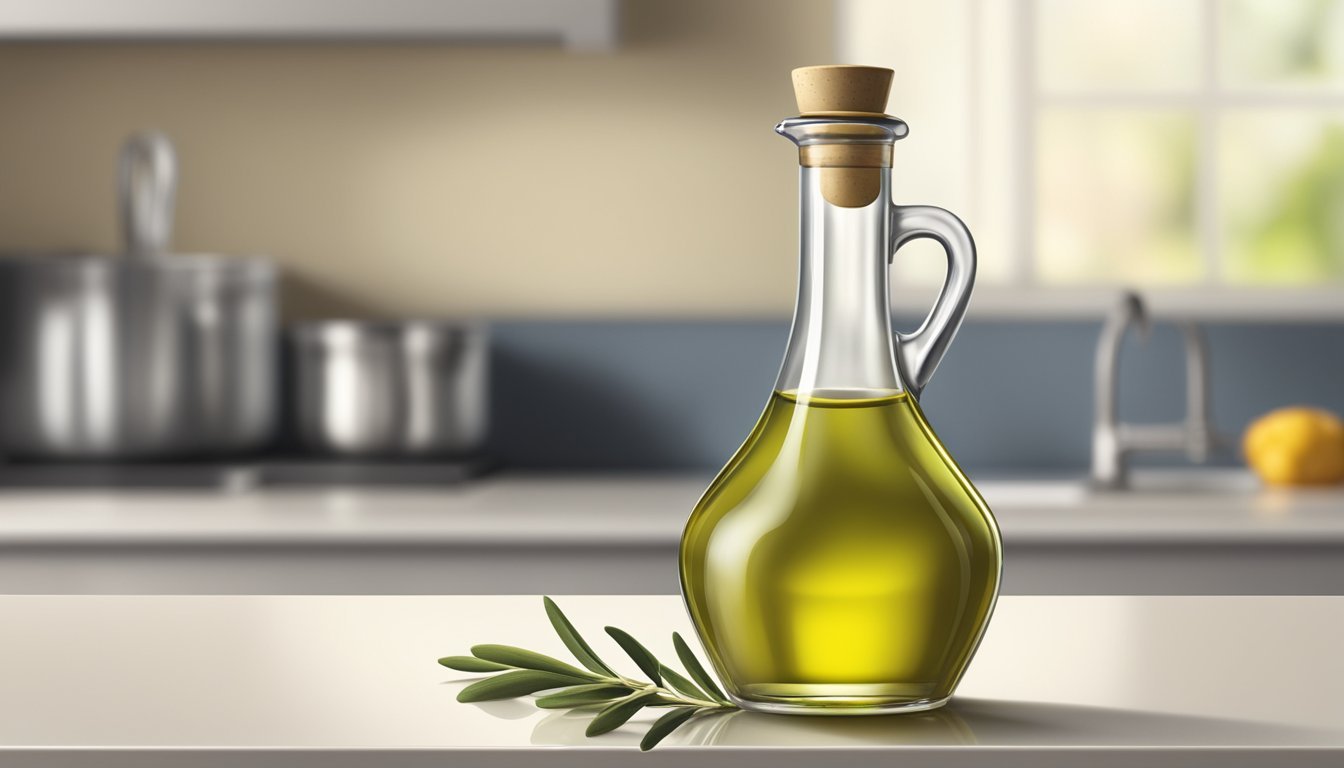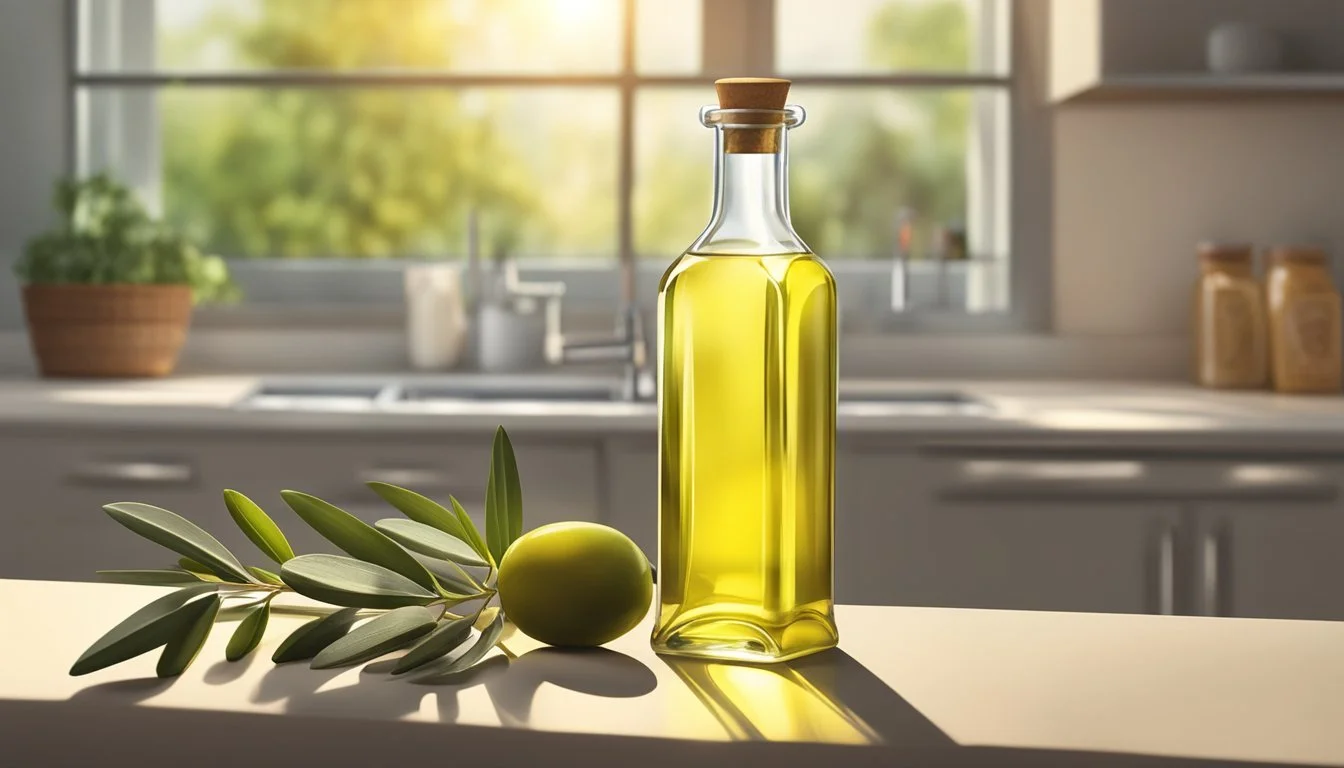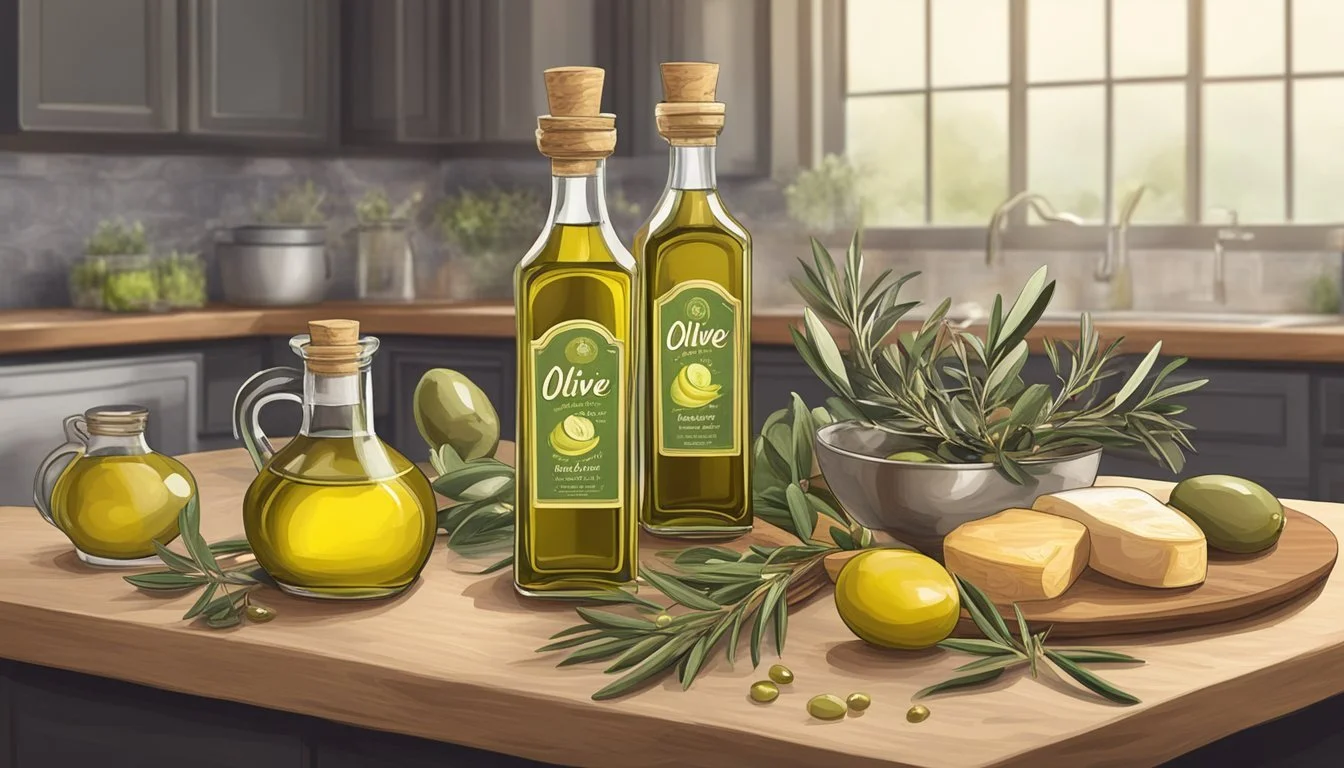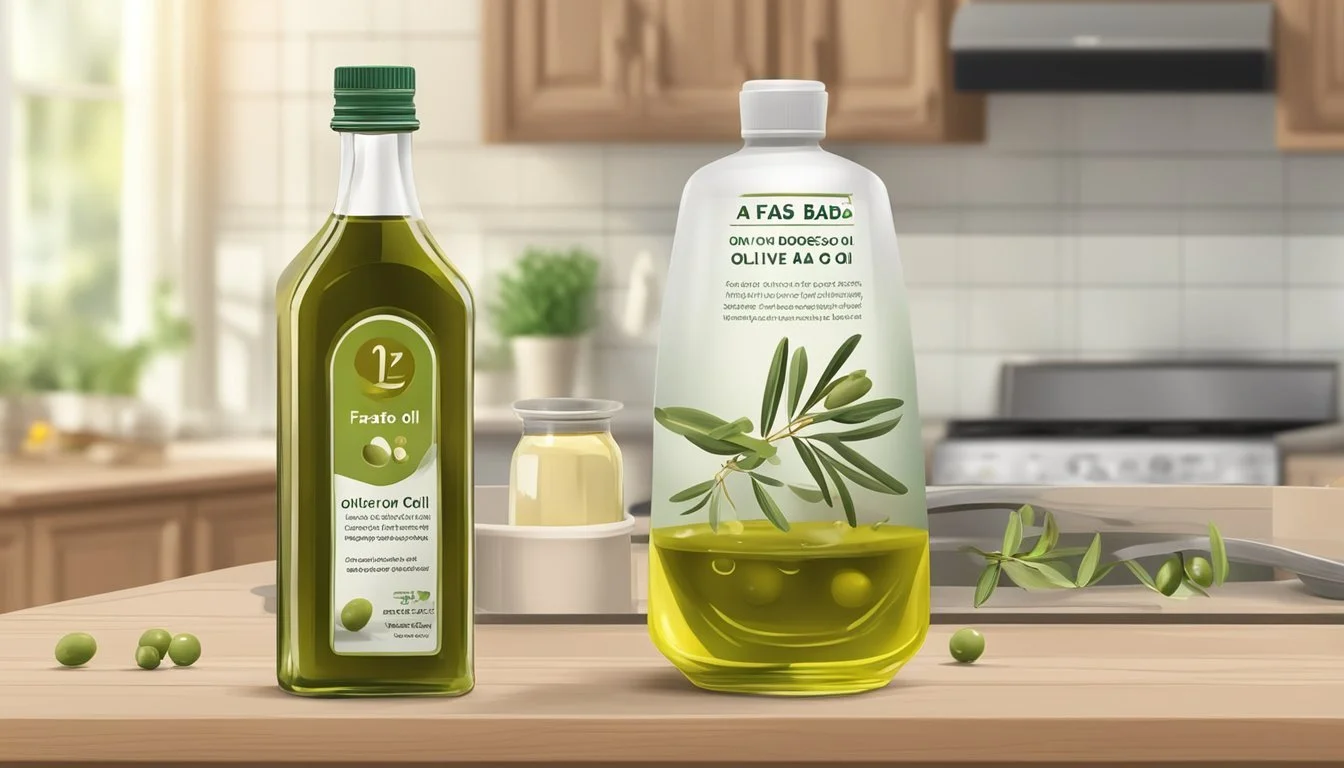Does Olive Oil Go Bad?
Understanding Shelf Life and Spoilage Signs
Olive oil is a staple in many kitchens, celebrated not only for its versatility in cooking but also for its health benefits. Like all natural products, olive oil has a shelf life and can indeed go bad. The longevity of olive oil depends on multiple factors including the type of olive oil, how it's stored, and the date it was bottled. Typically, most olive oils last from 18 to 24 months from the bottling date, but extra virgin olive oil, which is less processed and more delicate, might have a slightly shorter life span of about 12 to 18 months.
The quality of olive oil degrades over time due to exposure to light, air, and heat. To preserve its quality for as long as possible, it should be stored in a cool, dark place, ideally in a dark-tinted glass bottle. When olive oil goes past its prime, it loses the characteristic flavors—ranging from grassy and peppery to fruity and bitter—that make it so prized in culinary use. Rancidity is the most common sign of expired olive oil, identifiable by a stale smell and altered taste. It's important for consumers to realize that while bad olive oil might not necessarily make them sick, its sensory and nutritional qualities will be diminished.
Recognizing the signs of spoilage is crucial as the best-by date alone may not be a foolproof indicator—the oil's life can be shortened by improper storage conditions or extended by optimal care. Although the best-by date provides a good guideline, individual bottles may vary depending on how they've been handled. Therefore, using one's senses to assess the aroma and flavor is also advised in determining if olive oil is still good to use.
Understanding Olive Oil
Olive oil is a staple in many kitchens, lauded for its flavor and health benefits. This versatile oil is a fruit juice extracted from olives, and it comes in various types, each with its unique qualities. Its richness in antioxidants and nutritional value makes it a valued agricultural product not just for culinary uses but also for its contribution to a healthy diet.
Types of Olive Oil
Extra Virgin Olive Oil (EVOO): The highest quality level, made from pure, cold-pressed olives without the use of heat or chemicals. It is known for its impeccable taste and the highest level of beneficial antioxidants.
Virgin Olive Oil: Similar to EVOO, but with a slightly lower quality and more acidity.
Refined Olive Oil: Chemically treated to neutralize strong tastes. It’s often blended with some virgin olive oil to enhance flavor.
Pure or Regular Olive Oil: A blend of refined olive oil with a small amount of EVOO.
Light or Extra Light Olive Oil: These terms refer not to the calorie content but the lighter color and flavor. This oil is often a combination of refined olive oils with little to no EVOO presence.
Natural Composition and Health Benefits
Olive oil’s composition is unique—it contains a high concentration of monounsaturated fats, particularly oleic acid, which is linked to heart health. The presence of antioxidants like polyphenols is what sets extra virgin olive oil apart, believed to play a role in its health benefits. Olive oil's nutritional profile supports claims that it can reduce inflammation and may even have beneficial effects on genes linked to cancer.
Harvesting and Extraction Process
The extraction of olive oil is a careful process that influences the final product's quality. For extra-virgin olive oil, the olives are harvested and pressed mechanically without heat, a process known as "cold pressing." This method preserves the olive oil's natural flavors and high antioxidant levels. As an agricultural product, the timing of the harvest and the methods of extraction are crucial to ensuring the high nutritional value and taste profile of olive oil, particularly extra-virgin varieties.
Shelf Life and Freshness Indicators
Understanding the shelf life and noticing freshness indicators are crucial for maintaining the quality and taste of olive oil. Various factors including the expiration date, changes in taste and aroma, and visual qualities can signal whether olive oil remains fresh or has gone rancid.
Expiration Date
Olive oil typically has a shelf life of 18 to 24 months from the bottling date, although extra-virgin olive oil may have a shorter lifespan of around 12 months. To ensure the consumption of fresh olive oil, it's recommended to use it within 30-60 days after opening.
Check the bottle: Look for a harvest date or a best-by date.
Storage conditions: Store olive oil in a dark, cool place to maximize freshness.
Changes in Taste and Aroma
The flavor and smell of olive oil are key indicators of freshness. Fresh olive oil has a fruity aroma and can taste slightly bitter. When olive oil becomes rancid, its
Taste: Fresh oil should have a fruity, bitter, or peppery note, while rancidity brings an unpleasant sharpness or a taste likened to putty or crayons.
Smell: Sniff for scents of fresh cut grass or artichokes versus the musty or vinegary smell of rancid oil.
Visual Quality Signs
The appearance of olive oil can provide noticeable clues about its condition. Fresh olive oil typically has a vibrant color, which can range from green to golden yellow. When oil degrades, it may become cloudy, or solidify at cooler temperatures, which does not necessarily indicate rancidity but rather a reaction to cold.
Color: A bright, vibrant color indicates freshness, but color can degrade over time.
Consistency: While cloudiness can occur with temperature changes, a sticky or thick texture is often a sign of degradation.
Sediment: Settled sediment at the bottom of the bottle can signify aging oil.
Factors Affecting Olive Oil Stability
The quality and shelf life of olive oil are greatly influenced by several environmental factors. It is critical for consumers to understand these factors to maintain the stability and integrity of the oil.
Exposure to Light
Olive oil should be stored away from light, especially direct sunlight, as it accelerates the degradation process. Dark glass bottles offer better protection compared to clear glass by filtering out light and helping to preserve the oil's qualities.
Temperature Influence
The ideal storage temperature for olive oil is in a cool and dark place, typically around 14-21°C (57-70°F). Exposure to high temperatures can lead to a faster spoilage rate. It is not recommended to refrigerate olive oil, as this can lead to condensation and affect the flavor.
Air and Oxygen Impact
Olive oil's exposure to air and oxygen should be minimized to prevent oxidation, which deteriorates the oil. Using bottles with tight-fitting caps or purchasing olive oil in containers with nitrogen flushing—to displace oxygen—can extend its shelf life. Avoid storing olive oil near heat sources that could encourage oxidation and degradation.
Proper Storage Practices
Proper storage of olive oil is essential to maintain its quality and extend its shelf life. Olive oil should be stored in a way that protects it from elements that can degrade it such as light, heat, and air.
Best Storage Locations
The optimal locations for storing olive oil are cool and dark places. A pantry or a kitchen cabinet away from the stove and other heat sources provides an ideal environment. Temperature is critical; the area should remain consistently cool to prevent spoilage.
Container and Cap Considerations
When it comes to containers, olive oil should be kept in a bottle made of dark glass, stainless steel, or a tin to block out damaging light. The integrity of the olive oil is also reliant on a cap that seals tightly, preventing exposure to air, which can lead to oxidation and rancidity.
Long-Term Storage Tips
For long-term storage, consider placing the olive oil in the refrigerator. This will turn the oil cloudy due to solidification, but it does not affect the taste or quality. Once the oil returns to room temperature, it regains its normal consistency. It's crucial, however, to avoid drastic temperature changes to preserve the olive oil's characteristics.
Using Olive Oil Beyond Cooking
While many people reach for olive oil primarily for frying, baking, or to finish off a bowl of pasta, its versatility extends far beyond the kitchen. Olive oil can offer benefits in various non-culinary contexts, from beautifying regimens to practical household applications.
Alternative Uses
Household Lubricant: Olive oil can serve as a natural lubricant for squeaky door hinges, replacing conventional petroleum-based products.
Furniture Polish: A mixture of olive oil and vinegar can act as an effective furniture polish, offering a natural sheen to wooden surfaces without the harmful chemicals found in many commercial products.
Crayon Remover: Olive oil can help remove crayon marks from various surfaces. Applying a small amount of oil on a cloth can make wiping away the stubborn crayon a breeze.
Sticker Residue Remover: When price tags or stickers leave a sticky residue behind, a bit of olive oil can help clean it off without scratching the surface beneath.
Beauty and Health Applications
Skin Moisturizer: Olive oil's hydrating properties can be beneficial for the skin. It can be used as a natural moisturizer, especially for people with dry skin or in dry climates.
Hair Conditioner: As a deep conditioner, olive oil can provide much-needed moisture to dry and frizzy hair. Simply applying it to the ends of the hair and scalp can help nourish and strengthen hair.
Makeup Remover: Olive oil is gentle on the skin and can effectively dissolve makeup, including waterproof mascara. It's a healthy, chemical-free alternative to store-bought makeup removers.
Cuticle Care: Massaging olive oil into cuticles can soften them and promote nail health. Continuous use can lead to stronger, healthier nails.
Olive oil is not just versatile in the culinary world but also in everyday life, providing useful solutions in and out of the kitchen.
Recognizing and Handling Spoiled Olive Oil
Recognizing the signs of spoiled olive oil is crucial to ensure one doesn't consume a product that could negatively impact taste and miss out on the oil's beneficial properties. Safe disposal methods are important to prevent potential environmental harm.
Assessing Oil Spoilage
Smell: A primary indicator of spoiled olive oil is its smell. Fresh olive oil should have a grassy, sometimes fruity aroma. If one detects a stale or rancid scent, similar to crayons or putty, it's likely that the olive oil has expired. Spoiled olive oil might also lose its original taste, becoming bland or exhibiting off-flavors.
Taste Test: To confirm the spoilage, one can taste a small amount. It should have a bitterness characteristic of fresh olive oil. If it tastes stale or has a waxy flavor, it indicates degradation.
Safe Disposal Methods
Household Disposal: If the olive oil is spoiled, it should not be poured down the drain as it can clog pipes and harm the water treatment process. Instead, they should pour it into a non-recyclable container and discard it with solid waste.
Recycling Centers: Some recycling centers accept spoiled oils for proper disposal or transformation into biofuels. One can contact local waste management services to find an appropriate facility.
Guideline: Always check local regulations for specific disposal guidelines, as they can vary by region and ecological conservation efforts.
Buying and Consumption Tips
When purchasing olive oil, one must consider both its freshness and expected usage rate since these factors significantly influence the oil’s flavor and nutritional value.
Selecting Quality Olive Oil
The quest for quality olive oil starts with opting for extra virgin olive oil (EVOO), as it is processed without chemicals and is the highest quality grade available. Shelf life is paramount, so shoppers should look for a harvest date on the label; a recent one is preferable. If unavailable, the best-by date can be used as a guideline, though it's less ideal. Olive oil is best enjoyed when it's fresh, so consumers should be wary of purchasing in bulk unless planning to use it quickly.
Consumption Best Practices
Upon opening a bottle of olive oil, its exposure to oxygen, heat, and light should be minimized to preserve its shelf life. Consumers should aim to use an open bottle of olive oil within 30-60 days to enjoy its optimal taste and health benefits. Storing it in a cool, dark place can extend its usability. Since olive oil contains fatty acids that can go rancid, it's critical to use it before it loses its characteristic aroma and flavor.
Final Thoughts
Managing olive oil properly ensures it retains its quality and stays within the confines of its shelf life for the benefit of one's culinary experiences.
Summarizing Olive Oil Care
Shelf Life: Quality olive oil typically lasts up to 24 months under ideal storage conditions—cool and dark environments are preferable. Once the bottle is opened, the oil should ideally be used within 30-60 days for optimal freshness.
Storage: To reduce aging due to exposure, store olive oil in a tightly sealed container away from heat and light.
Quality Check: It is essential to periodically test olive oil for any signs of degradation, such as a rancid or stale smell, which indicates it is no longer pleasant to use.
Bottom Line on Olive Oil Stability
Expiration: While olive oil does not become harmful upon expiration, its quality deteriorates, losing its nutritious profile and potentially developing an unpleasant taste. Aging: With time, factors like oxygen and light accelerate the aging process, making it vital to use the oil within the suggested timeframe post-opening.
FAQs on Olive Oil
Before delving into common inquiries, it's crucial to understand that olive oil, like any natural product, is susceptible to degradation over time. Proper storage and an awareness of the oil's shelf life are key to preserving both its health benefits and flavor.
Common Questions Answered
Does olive oil expire?
Yes, olive oil does have a shelf life. Typically, olive oil lasts about 18 to 24 months from bottling when kept in ideal conditions, away from light and heat.
How do I store olive oil to ensure freshness?
Olive oil should be stored in a cool, dark place, such as a cabinet away from the stove or other heat sources. Optimal storage conditions can significantly extend its usable life.
Can the health benefits of olive oil diminish over time?
Over time, especially if improperly stored, olive oil can undergo an oxidation process, losing some of its beneficial properties such as antioxidants.
How does one detect if olive oil has gone bad?
Rancidity is a clear sign of expired olive oil; it may smell stale or similar to crayons or wax. The taste can also be noticeably off—lacking the fresh, grassy notes of good quality olive oil.
What is the best way to use olive oil once opened?
After opening, olive oil should ideally be used within 30 to 60 days to enjoy its optimal flavor and health benefits.
Using olive oil within its shelf life and proper storage practices can ensure one enjoys its maximum flavor and nutritional value.







